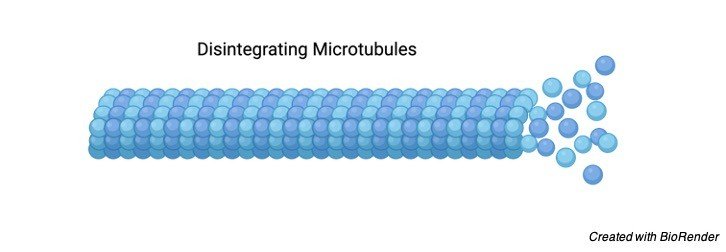What are Cytoskeleton?
The presence of cytoskeleton in the design of the cellular material was proposed by Koltzoff in 1928. They are intertwining organization of protein fibers stretched out all through the cytoplasm and lattice of various proteins in cells.
As its name infers it assists with keeping up with cell shape and is significant in cell motility.
It is a unique three-dimensional construction that fills the cytoplasm. This construction goes about as both muscle and skeleton, for development, locomotion, and strength.
Features of Cytoskeleton
The interior movement of cell organelles, velocity, and muscle fiber withdrawal can’t happen without the cytoskeleton.
It is accepted that cytoskeleton is the trademark highlight of eukaryotic cells however late examination demonstrated that prokaryotic cells have proteins that structure a cytoskeleton.
Over the span of the human genome project more than 800 presumably cytoskeleton related qualities are found.
Based on three kinds of protein fibers, cytoskeletons are of three sorts like microtubules, halfway fibers and microfilaments.
Microfilaments
Microfilaments are fine, string-like protein strands, 5-7 nm in breadth, address the dynamic or motile piece of the cytoskeleton.
They seem to assume a significant part in cyclosis and amoeboid movement. They are made overwhelmingly out of a contractile protein called actin, which is the most plentiful cell protein.
These fibers are cross connected into organizations or groups. The semi adaptable microfilaments make cells versatile, to isolate in mitosis (cytokinesis) and are answerable for strong compression. The adaptable transitional filaments fortify the cell furthermore.
As a rule a shell of microfilaments upholds the plasma layer. Microfilaments are a polymer of actin protein subunits in addition to appended proteins like cross-linkers.
Most multi-cell creatures have a few actin iso-structures. People have six actin qualities; four encode alpha-actin, one beta-and one gamma-actin.
Alpha-actin is found in muscle cells where it assumes a significant part in getting the cell, though beta-actin is limited toward the front of moving cells and gamma-actin structures pressure strands.
Actin protein as a polymer without connected proteins is called filamentous actin (F-actin), while the globular actin monomers are called G-actin.
Actin Filaments
Actin fibers are 8 nm in distance across and comprise of two strands of the protein actin that are bound around one another.
They are particularly unmistakable in muscle cells, where they accommodate the withdrawal of muscle tissue, monomers of the protein actin polymerize to frame long, slight filaments.

A few elements of actin fibers structure a band just underneath the plasma layer that gives mechanical solidarity to the phone, joins trans-film proteins (e.g., cell surface receptors) to cytoplasmic proteins, secures the centrosomes at inverse posts of the cells during mitosis, and squeezes partitioning creature cells during cytokinesis.
It produces cytoplasmic gushing in certain cells, velocity in cells, for example, white platelets and the one-celled critter, and connect with myosin (“thick”) fibers in skeletal muscle strands to give the power of solid constriction.
Microtubules
Microtubules are profoundly unique protein polymers that structure an essential piece of the cytoskeleton in every single eukaryotic cell.
Robertis and Franchi (1953) noticed the first time in the axoplasm of the myelinated nerve filaments, which they called neurotubules.
Microtubules were first depicted exhaustively by Ledbetter and Porter (1963).
Microtubules are transport lines inside the cells.
Microtubules are round and hollow cylinders, 20-25 nm in measurement, and made out of protein tubulin subunits.

These subunits are named alpha and beta. Each miniature tubule is composed of eleven sets of these tubulin subunits masterminded in a ring.
A significant part of microtubules is giving a pathway to intracellular developments of organelles and proteins.
This is finished by engine proteins (kinesins and dyneins) under the utilization of ATP.
The centrosome is situated in the cytoplasm appended to the outside of the core. It is duplicated during the S phase of the cell cycle. Not long before mitosis, the two centrosomes move separated until they are on inverse sides of the core.
As mitosis continues, microtubules develop out from every centrosome with their in addition to closes developing toward the metaphase plate. These clusters of microtubules are called axle strands.
Importance of Cytoskeleton: Cell Movement
Cell movement is achieved by cilia and flagella. Cilia are hair-like constructions that can beat in synchrony causing the movement of unicellular Paramecium.
The two cilia and flagella are built from microtubules, and both give either motion to the cells (e.g., sperm) or move liquid (e.g., ciliated epithelial cells that line our air entries and move a film of bodily fluid towards the throat).
Every cilium or flagellum is made of a round and hollow exhibit of 9 equally divided microtubules, each with a halfway microtubule connected to it. 2 single microtubules run up through the focal point of the pack, finishing the supposed “9+2” design.
The whole get together is sheathed in a layer that is just an expansion of the plasma membrane.
Some eukaryotic cells move about through microtubules connected to the outside of the plasma layer. These microtubules are called flagella and cilia.
Flagella and cilia both have a similar construction: a ring of nine tubulin trios orchestrated around two tubulin sub-units.
The distinction among flagella and cilia lies in their movement and numbers. Flagella are appended to the cell by a “wrench” Mike mechanical assembly that permits the flagella to turn. Cilia, then again, are not joined with a “wrench,” and beat to and fro to give movement.
Ciliated cells generally have many these projections that cover their surfaces.
For instance, the protist Paramecium moves through a solitary flagellum, while the protist Didinium is covered with various cilia.
In microtubules one alpha-and one beta-tubulin structure a hetero-dimer. Long chains of these hetero-dimers made out of proto-fibers, wherein consistently an alpha-tubulin is followed by a beta-tubulin.
Each microtubule has a (- ) and a (+) end. At the (+) or beta-tubulin end new heterodimers are added quicker and at lower tubulin fixations than at the (- ) or alpha-tubulin end.
The alpha-tubulin just as the beta-tubulin subunit ties a little guanosine tri-phosphate (GTP). Cells have protein engines that tight spot two particles, and utilizing ATP as energy, influence one atom to move in relationship to the next.
Two sorts of these protein engines are myosin and actin, and dynein or kinesin and microtubules. These groups of proteins all have a motor end, however, may have a few sorts of various atomic designs on the limiting end.
At the point when these proteins tie the atoms they are moved to various organelles. When connected to different microtubules, protein engines can cause movement if the finishes are fixed or broaden the lengths of the fiber groups if the closures are free.
Cytoskeleton Citations
- Manipulation of the Host Cell Cytoskeleton by Chlamydia. Curr Top Microbiol Immunol . 2018;412:59-80.
- The cytoskeleton. Natl Cancer Inst Monogr . 1982;60:31-46.
- The Role of Host Cytoskeleton in Flavivirus Infection. Virol Sin . 2019 Feb;34(1):30-41.
- The structural organization of Giardia intestinalis cytoskeleton. Adv Parasitol . 2020;107:1-23.
- The Evolving Complexity of the Podocyte Cytoskeleton. J Am Soc Nephrol . 2017 Nov;28(11):3166-3174.
- The Cytoskeleton as a Modulator of Aging and Neurodegeneration. Adv Exp Med Biol . 2019;1178:227-245.
- The cytoskeleton as a novel therapeutic target for old neurodegenerative disorders. Prog Neurobiol . 2016 Jun;141:61-82.
- Cytoskeleton-a crucial key in host cell for coronavirus infection. J Mol Cell Biol . 2020 Jul 1;12(12):968-979.
- Overview of the Cytoskeleton from an Evolutionary Perspective. Cold Spring Harb Perspect Biol . 2018 Jul 2;10(7):a030288.
- The cytoskeleton and cancer. Cancer Metastasis Rev . 2009 Jun;28(1-2):5-14.
- Mechanical Properties of the Cytoskeleton and Cells. Cold Spring Harb Perspect Biol . 2017 Nov 1;9(11):a022038.
- Cell mechanics and the cytoskeleton. Nature . 2010 Jan 28;463(7280):485-92.
Share









